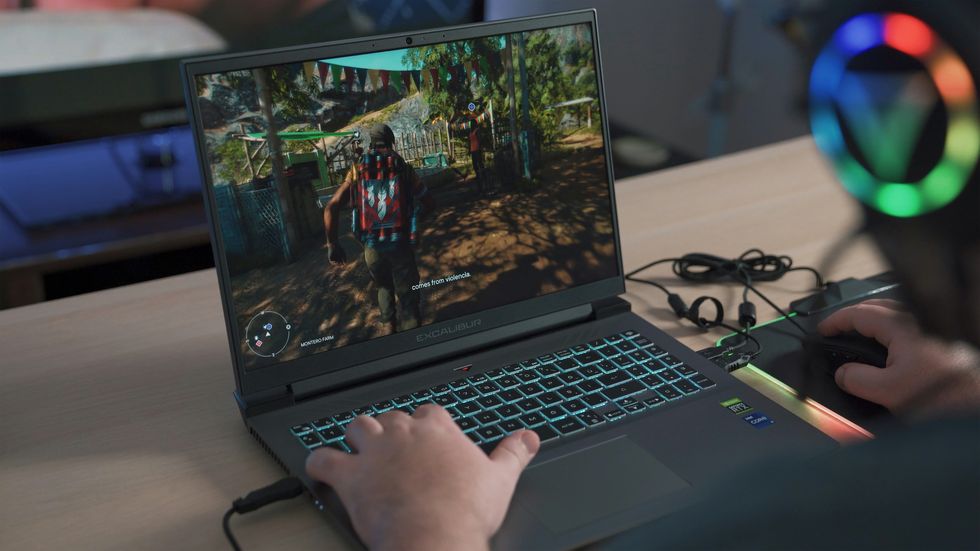Digital innovation has changed almost every aspect of modern life, including our play habits. Traditional physical games have found new life online as digital adaptations emerge with distinct advantages and drawbacks compared to their physical predecessors. From dodgeball to chess, digital transition has drastically reshaped how we interact with these timeless classics. Is this change positive or negative? In this blog, we will look at these questions closely.
Chess
The grandmaster goes digital. Chess has successfully transitioned from over-the-board matches to online platforms like Chess.com and Lichess, offering features like puzzle solving, instant matchmaking, and analysis tools. However it lacks the tactile sensations associated with moving pieces across a physical board or reading your opponent's expressions during face-to-face confrontations.
- Pros: Convenience, AI opponents, analysis tools, global play
- Cons: No physical interaction, potential for cheating
- Key Difference: The absence of "human reads" when assessing an opponent's intentions.
Football (FIFA Gaming Series)
From grass fields to consoles. Soccer has made the transition seamlessly to digital entertainment through games like EA Sports' FIFA series. These titles capture the thrill of dribbling, passing, and scoring, providing an exhilarating e-sports experience. Players can showcase their skills and strategy virtually bringing this timeless sport to an international audience. Yet without experiencing physical exhilaration of running on grass fields or team camaraderie on pitches. Though FIFA allows convenient anytime-anywhere playback of real-life game playback.
- Pros: Engaging gameplay, global tournaments and accessible to players of all skill levels
- Cons: No physical fitness gains and dependence on microtransactions
- Key Difference: An artificial goal on a console offers excitement but lacks teamwork or physical exertion benefits.
Tag (Among Us)
Tag, they're "sus". Among Us has revolutionized the classic fun of tag by creating an intense digital experience with elements of deception and deduction that create tension and thrill as players identify "impostor" among their team mates. The online format allows people from around the globe to engage in strategic gameplay that helps form collaboration or betrayal during every session. Among Us may have immense popularity but cannot replace the physical thrills associated with traditional tag's physical chase and dodging gameplay. Its sheer exhilaration cannot rival this original form's energy of running, tagging, and dodging that makes traditional tag so captivating.
- Pros: Rich with themes and creativity, global players
- Cons: No physical movement required. Relies solely on strategic thinking instead of reflexes
- Key Difference: The thrill lies more in mental than physical pursuit.
Tennis (Virtual Tennis)
From court to cursor. Virtual tennis games like Tennis World Tour capture the fast-paced essence of real tennis matches with realistic physics and strategies, staying true to its core elements. Players can experience thrilling rallies and tactical gameplay without ever leaving their screen. While digital tennis offers accessibility and convenience, nothing compares to experiencing physical demands, adrenaline of quick footwork, not forgetting hearing the ball hit the racket for real.
- Pros: Can be played anytime, anywhere, weather proof.
- Cons: Lacks spontaneous gameplay as seen with real tennis play
- Key Difference: Online tennis offers an alternative way to compete by replacing physical exertion with button-mashing precision.
Tower Defense (Strategy Games)
Building your base, defending what’s yours. Tower Defense games encourage strategic thinking and resource allocation. Popular examples like Bloons Tower Defense and Plants vs. Zombies encourage players to build defenses against waves of enemies while planning placement and upgrading resources for maximum success.
- Pros: Promotes critical thinking and long-term planning
- Cons: Can become repetitive after extended play
- Key Difference: Focuses entirely on strategy and resource allocation rather than direct combat or action.
Solitaire Games
Solitaire is a single-player card game designed to test patience, focus and problem-solving skills. These classic card games often involve players arranging cards into specific sequences or patterns with both strategy and chance involved. The popular variants include Klondike, Spider and FreeCell with each offering different rules and challenges. Solitaire has been enjoyed for decades both physically and digitally.
- Pros: Can be highly relaxing, offering an effective means of unwinding.
- Cons: May lack the social element associated with multiplayer games.
- Key Difference: Solo play offers an exclusive and meditative experience.
Hide and Seek (Prop Hunt)
Hiding in plain pixels. Games such as Prop Hunt add an innovative spin on traditional hide and seek by enabling players to become objects that they find scattered around a virtual map. This unique twist opens up endless creative opportunities not possible in reality, such as hiding as chairs and lamps in unexpected spots. While this game excels at inspiring imaginative strategies and funny moments, it lacks the same tangible tension associated with physical hide-and-seek. Instead, digital interactions create more rapid pace interactions, giving an entirely different yet equally enjoyable experience.
- Pros: Creative hiding opportunities, innovative gameplay
- Cons: Less physical engagement, depends on maps and game design
- Key Difference: Unique disguises inject creativity that doesn’t exist in physical versions.

Bowling (PBA Pro Bowling and Wii Sports)
Rolling strikes without the shoes. Online bowling platforms such as Wii Sports and PBA Pro Bowling bring the lively arcade experience of bowling directly onto your screen. These immersive titles capture the essence of striking strikes and spares with realistic motion controls and visuals, providing immersive gameplay. However, without physical bowling balls or satisfying pin crashing sounds this virtual experience offers more streamlined fun. Providing convenient entertainment without needing special equipment or venues. Nonetheless, these platforms excel at providing fun without incurring high lane fees for dedicated venues or facilities.
- Pros: No heavy bowling balls nor expensive lane fees
- Cons: Less physicality and less social interactions
- Key Difference: Lowered barrier of entry but reduced hands-on enjoyment.
Basketball (NBA 2K Franchise)
Shooting hoops online. NBA 2K series brings basketball to life digitally with stunning graphics and realistic player stats, making it a fan-favorite. The series does a remarkable job of recreating its strategy and competition aspects while offering engaging gameplay and the option to take your team online. However it falls short in replicating the thrill of sinking three-pointers on real courts or fast breaks. Its accessibility and entertainment value remain unparalleled, and live play remains irreplaceable as far as physical intensity goes.
- Pros: Access to professional teams and competitive tournaments
- Cons: No physical fitness and button combos replace skill
- Key Difference: Strategy remains, while physical intensity has been reduced significantly.
Poker
Cards without the poker face. Poker's transition from physical settings to online platforms such as PokerStars has been relatively seamless, quickly becoming popular due to their convenience of play anytime and anywhere. While bluffing has changed significantly from physical formats, reading an opponent's body language becomes less important when played virtually, thus changing its dynamics. Still, traditional elements of skill, strategy, and luck remain present ensuring this remains an exciting game suitable for both casual and competitive players.
- Pros: Quick matchmaking, global community
- Cons: Impersonal, no physical "tells"
- Key Difference: Bluffing becomes entirely psychological rather than physical.
Archery (VR Archery Games)
Bow and arrow adventures in VR. Virtual reality (VR) archery offers immersive and engaging gameplay through platforms such as "The Lab." These games replicate the precision and mechanics of real archery, providing players with a sense of accuracy and control. While VR archery captures many aspects of real archery, like wind dynamics challenge players, as does tactile tension from bowstring tension, there are certain limitations which restrict its appeal. Nevertheless it remains an exhilarating way to experience bow and arrow adventures.
- Pros: Engaging VR environment suitable for indoor play
- Cons: No tactile feedback and no outdoor scenic beauty to experience
- Key Difference: Precise aiming is simplified, making physical challenges simpler to conquer.
Dodgeball (Knockout City)
Throwing virtual dodgeballs. Knockout City brings a cartoony, fast-paced dodgeball experience to virtual reality gaming with trick shots and special effects that are highly entertaining online. While highly engaging, Knockout City doesn't quite recreate the tension associated with dodging fast-flying balls aimed directly at you.
- Pros: Over-the-top mechanics, fun team battles
- Cons: No actual physical movement
- Key Difference: Creativity replaces raw athleticism.
Scrabble (Words With Friends)
Word games, anytime. Words With Friends brings classic Scrabble play into the digital era by transitioning it onto mobile platforms, giving players access to its familiar gameplay mechanics, engaging in word challenges and competing against friends or strangers anytime and anywhere. No physical game board required. Unfortunately though, its digital format sacrifices some of the lively interactions and friendly banter found when playing around physical boards. Nonetheless it remains an exciting and flexible way for word game enthusiasts looking for an accessible yet fun way to enjoy word games anytime anywhere.
- Pros: On-the-go play without physical setup required
- Cons: No banter between players
- Key Difference: More efficient but less social
Capture The Flag (FPS Games)
Flags in first-person worlds. Whilst Halo and Call of Duty both incorporate Capture the Flag modes into their FPS titles, the sneaking, running and grabbing physical flags have been replaced with gunplay and digital tactics.
- Pros: Weaponry and team coordination is enhanced
- Cons: Lack of physical stealth and movement
- Key Difference: Strategy over sprinting

Conclusion
The transition of physical games to their digital equivalents showcases human resilience. From challenging strategy in chess to serene solitude in solitaire, technology has preserved their essence while making them more accessible than ever. Nostalgia seekers, convenience hunters or people just looking to connect more socially can all find something enjoyable here. These timeless activities remind us that play knows no bounds.





















